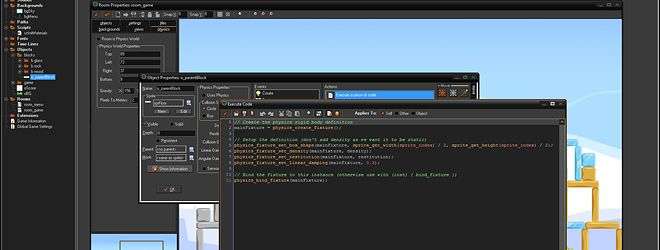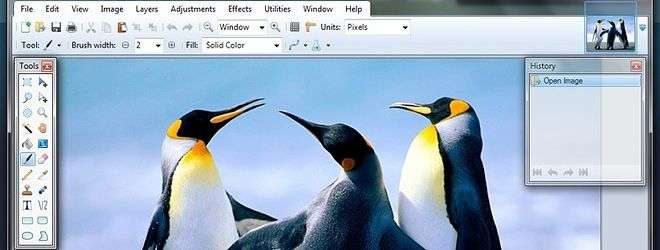Make Games, Not War
by Ric
 Ever since I was a wee bairn I wanted to make games. I didn’t have a word for it then; I wasn’t aware of programmers, artists, designers, scripters or any of the wide array of jobs that make up a dev team. For a long time I believed that the AI I was facing was actually real people being paid to play against me. To say I was naive is something of an understatement; an idiot is probably more accurate. But I carried on with my dream, thinking that one day I’d suddenly develop the skills to cobble together the next Crash Bandicoot or Spyro and make cool stuff that everyone would play.
Ever since I was a wee bairn I wanted to make games. I didn’t have a word for it then; I wasn’t aware of programmers, artists, designers, scripters or any of the wide array of jobs that make up a dev team. For a long time I believed that the AI I was facing was actually real people being paid to play against me. To say I was naive is something of an understatement; an idiot is probably more accurate. But I carried on with my dream, thinking that one day I’d suddenly develop the skills to cobble together the next Crash Bandicoot or Spyro and make cool stuff that everyone would play.
My mother, wise as she has always been, rightly tried to tell me that making games was, in fact, incredibly difficult. I distinctly remember an afternoon where I boasted that making something like Star Wars: Jedi Power Battles was as easy as dragging and dropping a bunch of characters onto a screen and that they would miraculously spring to life and the game would exist. My mother snorted with derision, and tried very delicately to explain to my unformed eight-year-old mind that there’s really a lot more to it than that. And bloody hell, wouldn’t you know it, the woman who got motion sick watching Spyro was right.
Obviously I was crushed by such a revelation; how was I now to make the next big thing? Over the years I gathered more and more information on the processes that actually go into development, and tried my hand at learning programming languages from tutorials on the internet, and even studying Computer Science at Sixth Form college to bolster my knowledge. I had already realised that art was not my strong suit (another wise observation from mother, who laughed for a good five minutes when I told her I was considering taking Art as a GCSE), so programming, getting into the real guts of the game, seemed like the best step forward.
 But, as any aspiring (or experienced) programmer will tell you, learning to code isn’t exactly a walk in the park either. It requires dedication, hard work, an aptitude for problem solving, a desire to experiment, and the drive to stay up until 4am trying to weed out that one bug that’s been eluding you for days. I, sadly, lack most of these things. My interest in programming waxed and waned, and nothing particularly sunk in, leaving me with only a handful of programming basics actually remembered, and no real progress made in any actual language learning. I’ve tried C, C++, Java, JavaScript, ASP, MySQL, Pascal, C#, HTML and CSS, and I could now only print “Hello, world!” in a handful of those.
But, as any aspiring (or experienced) programmer will tell you, learning to code isn’t exactly a walk in the park either. It requires dedication, hard work, an aptitude for problem solving, a desire to experiment, and the drive to stay up until 4am trying to weed out that one bug that’s been eluding you for days. I, sadly, lack most of these things. My interest in programming waxed and waned, and nothing particularly sunk in, leaving me with only a handful of programming basics actually remembered, and no real progress made in any actual language learning. I’ve tried C, C++, Java, JavaScript, ASP, MySQL, Pascal, C#, HTML and CSS, and I could now only print “Hello, world!” in a handful of those.
Why did I persist in trying to learn so much when I knew that inevitably I’d lose interest, and those hours spent fiddling with code would be all for naught? Because that was what I understood to be the done thing. The industry standard was C++ so I tried to learn C++. Developers said you should study at school and university – I took Computing as an A-Level and a minor at degree level. I was doing all the right things, according to what I’d been told, and yet none of it stuck. But I persisted, keen to realise my dream. Yet, after so many years struggling through, scraping by with a bare minimum knowledge, I finally jacked it in. My dream of making games was over.
And then Game Maker suddenly became an important program. I’d heard of it before, and had, in fact, messed about with it from time to time, but wrote it off as not powerful enough to make a full game, and certainly nothing grandiose as I had planned (which was basically nothing, but I had this idea in my head that all good games are 3D). And then Hotline Miami came along and changed all that. Here was a full game, critically acclaimed for its fast-paced brutal nature, excellent narrative and bizarre neon-hell art style, and it was put together in a program designed to make programming games into a drag-and-drop process.
And that’s when it clicked. I had heard, around the time the Wii was released, a theory that as consoles grew more powerful and capable of astounding graphics, there would be a resurgence of retro-styled games and a call for simpler graphics. I scoffed at the time, so set in my ways that 3D was the only true way to present a game world, but, as always, I was dead wrong. And I had continued to disavow “retro-style graphics” for years, even as they began a resurgence in the PC market. To say I took a while to come around to the idea is an understatement – my mental shift from “all great games must have beautiful graphics and a 360 controller involved” to “actually there’s a lot of great stuff out there that doesn’t conform to these norms” was glacial.
 So, with a ridiculous idea forced out of me during the “Pitch Time” round of our very own Ed’s podcast Life’s A Game, I decided to give game making a bash one last time, but cast away my ideas of what a game is and just make something. I chose Game Maker to throw together my stupid idea, given my brief experience with it and the wealth of information available online, and in a weekend produced my first ever game. If you could call it that. “dry.” is more of a joke, where the “player” must endure forty minutes of staring at a blue screen while a depressed guy mutters about how much he hates his life. It’s not very good, but it wasn’t intended to be.
So, with a ridiculous idea forced out of me during the “Pitch Time” round of our very own Ed’s podcast Life’s A Game, I decided to give game making a bash one last time, but cast away my ideas of what a game is and just make something. I chose Game Maker to throw together my stupid idea, given my brief experience with it and the wealth of information available online, and in a weekend produced my first ever game. If you could call it that. “dry.” is more of a joke, where the “player” must endure forty minutes of staring at a blue screen while a depressed guy mutters about how much he hates his life. It’s not very good, but it wasn’t intended to be.
And yet, it’s overriding awfulness aside, it felt so good to have made something. Really, really good. The number of people who played it could be counted on one finger, but there was still a phenomenal feeling associated with the fact I could point to something and say “that? That game right there? I made that.” Hours and hours of learning little bits of code, fiddling with images in Paint.NET and recording a god awful soundtrack came together in one complete package that, to this day, I am still incredibly proud of. But the problem remained – I am not an artist. I could not become a fancy-shmancy indie developer without someone else to do art. So I was incredibly excited when I heard about Twine, a program that makes for the easy creation of text adventures. And when I say easy, I mean it.
I was first introduced to Twine through a little game called Drunken Mind Control Slaughter by Tom Smith of “Oh No! Video Games!“. This game changed me in two ways. One, it made me laugh so hard that I nearly died. Breathing became rather difficult for some time. But, more importantly, it opened my eyes to an even more exciting way of doing games. There are no graphics, just words. I’ve spoken about playing text adventures before, but this is something entirely different. There’s only a handful of decisions, but they all lead to the same place. It’s barely a game. But it’s still incredibly good fun.
 And so I ran off and made my own games. I wrote about my life. I made them as dark and depressing as I could, and successfully shocked a few of my friends and family. My most recent game, called I Cheated On You (no prizes for guessing what it’s about) actually got mentioned across the Internet, and received some very high praise indeed, including mentions on Rock, Paper, Shotgun and the ever-popular Podtoid (at around the one hour, twenty-two minute mark, if you’re interested). I now have a collection of somethings of which I am incredibly proud, and which other people have enjoyed.
And so I ran off and made my own games. I wrote about my life. I made them as dark and depressing as I could, and successfully shocked a few of my friends and family. My most recent game, called I Cheated On You (no prizes for guessing what it’s about) actually got mentioned across the Internet, and received some very high praise indeed, including mentions on Rock, Paper, Shotgun and the ever-popular Podtoid (at around the one hour, twenty-two minute mark, if you’re interested). I now have a collection of somethings of which I am incredibly proud, and which other people have enjoyed.
So, to that end, I finally reach the point of my article – make games. Plain and simple. I know that my story probably isn’t an unfamiliar one, and I’m sure that a large number of people reading this will have had similar dreams at some time. And, let’s face it, you’re unlikely to be able to run out and make the next Gears of War or whatever big name game you want to take on. Hell, you probably won’t even be able to make the next Thomas Was Alone. I’m still struggling to make a functional version of Pong. But you can put together something, and that something will be special to you, regardless of the quality.
If you really, really can’t do art, but you can write, then Twine is perfect. There are tools in there to add graphics and sound and all sorts of bells and whistles, but you can quite easily throw out a game in the bog-standard format in no time. You can be witty or depressing, descriptive or sparse – it’s all up to you. A lot of the games that get talked about use the limitations of the software in some creative way – you may recall Ian’s rather wonderful article on Depression Quest, a Twine game that limits you from choosing certain actions because of your character’s mental state. It’s a beautiful way of showing the difficulty of depression, but also plays with the hyperlink system used in Twine games by showing you the option, but refusing to let you choose it. But you don’t have to do that. You can write a diary entry if you want. You can just write a novel and have the “player” click a button to turn to the next page. Twine is wonderfully simple, but open to so many possibilities.
If interactive fiction isn’t your bag, and you didn’t need a special pen when you were little to try and correct your handwriting like some people (cough me cough), then GameMaker is a great place to start, and can easily be downloaded on Steam. You don’t need to know any code, necessarily, although a basic knowledge may be useful if you want to really get at the guts of the engine. GameMaker allows you to drag and drop blocks of pre-written code to create character movement, scoring systems, and most other things you’ll need, all while dragging and dropping your art onto a screen to put it exactly where you want it. There’s also a huge community behind it, with plenty of tutorials and code samples kicking around, meaning you can put together a working prototype of a game in a matter of hours, with only a minimal understanding of what it is you’re actually doing.
 If you really want to get technical, and you know a thing or two about programming, then Unity may well be worth a look. The Unity engine is now widely used by indie developers to create a whole range of games, and is (reportedly) relatively straightforward to get to grips with, provided you have some prior know-how, and the Unity Asset Store allows you to buy engines and systems that others have already designed, to make creating games easier, if you have the cash. There’s no shame in buying them either – Mike Bithell, creator of Thomas Was Alone, frequently sings the praises of the Asset Store, and has openly discussed that he uses some of the items available in his upcoming game. The days of hard coding everything yourself really are gone.
If you really want to get technical, and you know a thing or two about programming, then Unity may well be worth a look. The Unity engine is now widely used by indie developers to create a whole range of games, and is (reportedly) relatively straightforward to get to grips with, provided you have some prior know-how, and the Unity Asset Store allows you to buy engines and systems that others have already designed, to make creating games easier, if you have the cash. There’s no shame in buying them either – Mike Bithell, creator of Thomas Was Alone, frequently sings the praises of the Asset Store, and has openly discussed that he uses some of the items available in his upcoming game. The days of hard coding everything yourself really are gone.
These are only three engines available, of course – there are tons more that I haven’t mentioned, which are being used to make exciting games all the time. Ren’Py, for example, is another engine for creating interactive fiction, although this is more useful for people with artistic talent too – see Analogue: A Hate Story for a Ren’Py game that made it to the (relative) big time. And who can forget RPG Maker, the engine used by Zeboyd Games to create such wonderful titles as Cthulu Saves The World and the last two Penny Arcade games? RPG Maker regularly hits the top spots during Steam sales, so you know there are tons of people out there using it, and from what I hear it’s a very powerful engine that can be used to make a variety of games – GL favourite To The Moon was made in it, and has almost none of the features one would expect from the sort of typical RPG that the engine was intended to build.
So pick your engine, get yourself a drink and some snacks, open a tutorial, and go make some games. This is the time to do it. With social networking providing you an audience, and file-hosting sites giving you an easy way to share your creations, there has never been a better time to make games and share them with the world, or even just a handful of friends. You don’t need to have a degree in Computer Science to be able to make fun, interesting, and novel creations that people can interact with and enjoy. And hey, you might not make any money out of it, but so what? Enjoy making games for the making of games. It’s a reward in itself to see your idea finally blossom into a full product, even if it is just a game about watching paint dry.
If I could tell my twelve-year-old self that one day he’d write something that some stranger on the internet thought was beautiful, I think he’d be proud of himself. I am immensely proud of myself and the work that I have accomplished, whether it’s writing for this website, making music, or creating depressing little games. So if you have an idea, don’t just let it sit there. Go out and make it a reality. Don’t worry if you think you’re not good enough. It doesn’t have to be fantastic. It just has to be something you can look at and say, “I made that.” It’s never been easier to make something to be proud of.
Last five articles by Ric
- Playing Rhiannon, With Rhiannon
- The Hidden Controversies of 2015
- Best of 2015: Tell No Tales
- Best of 2015: A Good Walk Spoiled By John
- Best of 2015: My Summer As A Drug Dealer
























Excellent. Keep is up Ric…and the writing